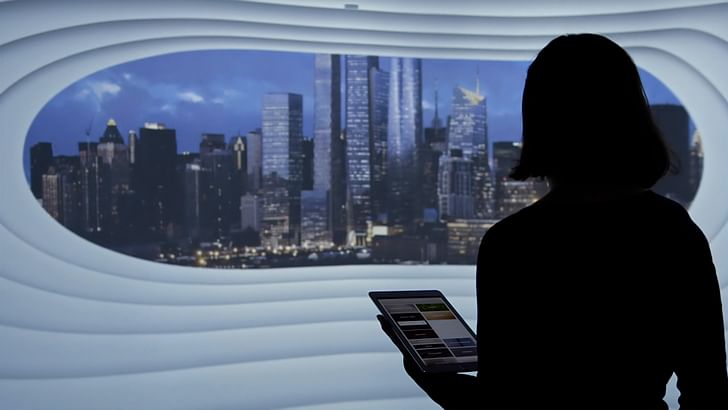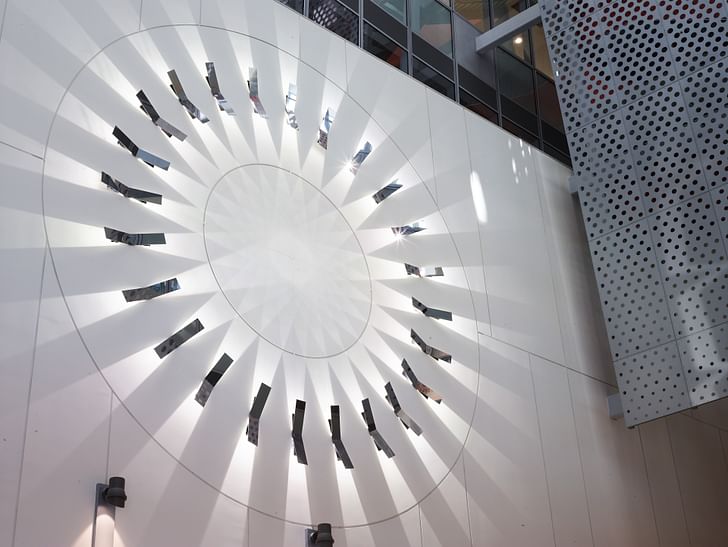

As the COVID-19 pandemic continues to upend and disrupt everyday life around the world, it has become clear that how we use buildings is also due to radically change, at least for the near-term. The door handles we touch, how close people wait in line, and when and how we occupy work spaces, retail establishments, and other shared facilities will likely be modified in some way. And while surely many of these changes will be both ad-hoc and temporary, some designers are looking to longer term technological upgrades to help streamline and bring a sense of wonder to the adaptation of these spaces.
We caught up with David Schwarz, Partner at New York City-based HUSH to get a better understanding of how experiential design might be challenged and re-calibrated in the aftermath of the pandemic. Schwarz highlights the ways that building use is poised to rely more heavily on non-tactile, auditory, and visually-based cues, for example, and how these changes can be filled with joy as well as pragmatism in a post-pandemic world.
How will the role of advanced building technology change in post-COVID life from the perspective of experience?
As experience designers, we don’t often interface with the core building engineering and technology infrastructure. But when we have, we’ve utilized it for creative expression, storytelling, and information sharing to some powerful effect.
One of our most satisfying and successful projects was the experience design for a net zero building in Silver Spring, MD for the biotech company United Therapeutics.

We went really deep into the building management systems, tapping into the 100,000s of energy sensors that feedback real-time data to energy dashboards and control rooms.
Along these lines, post-COVID building management systems will expand to incorporate an entire suite of sensors and data capture systems that monitor everything from the density of people in a conference room to body temperatures upon badge-in to heat mapping physical interactions. The role of our experience designers will be to access these systems and design ways to provide expressive feedback in the form of audio/visual content and cues that deliver on function and beauty.
post-COVID building management systems will expand to incorporate an entire suite of sensors and data capture systems that monitor everything from the density of people in a conference room to body temperatures upon badge-in to heat mapping physical interactions.

Do you anticipate that the prevalence of visual / experiential technological applications will increase? If so, why?
Yes, for multiple reasons.
Visual, sonic, and broader “experiential” technologies are a means of sharing information that have always been innate to the human senses. Broad, powerful, emotional, gestural. But, they are even more relevant in a post-COVID world as they are also biologically safe.
I’m most excited for the opportunity to convey messages and expressions in the form of broad signals, not pixel-specific interfaces. How will gestural design moves, more rooted in light, color, and sound than alpha-numerical information, grow in scale and opportunity?
Visual, sonic, and broader “experiential” technologies are a means of sharing information that have always been innate to the human senses. Broad, powerful, emotional, gestural. But, they are even more relevant in a post-COVID world as they are also biologically safe.
Certainly, there are some brass tacks changes that will happen regarding the most commodity of digital and interactive technologies persistent in the workplace, retail, or other environments. Everything requiring tactile interactions (like multi-touch screens, physical badges, keypads, card swipes and buttons) will be replaced with near-field communication tools like gestural or proximity interfaces, and there will be an increased shift in turning your personal mobile device into the key to your homes and workplaces. Because we can assume that mobile devices are becoming as intimate and biologically secure as your own hands, they will become the new control devices that unlock functional needs as well as grander, more creative experiential interactions.
But these are table stakes. Everyone knows it, and now it’s a race to adoption. While we’re racing to figure out the basic functions of our architectural environment, I hope we leave room to create new experiences that remind us of why we go back to the workplace, or shop, or seek entertainment as well.
Because we can assume that mobile devices are becoming as intimate and biologically secure as your own hands, they will become the new control devices that unlock functional needs as well as grander, more creative experiential interactions.

How can these technologies be used to facilitate social distancing or temporary changes in use / configuration during future quarantine episodes?
It’s hard to summarize a whole host of new technologies that will be integrated into our built environments, from the extremely functional/binary to the most sophisticated machine learning tools that will help track and optimize group behaviors.
I’m excited by some of the computer vision and blob tracking tools that we’ve used in the past to design artistic, interactive audio/visual experiences to now become more standardized technological infrastructure. Imagine walking through the public-private space in between a transit hub and a commercial real estate lobby that has incorporated this kind of end to end visual detection. What if instead of a harsh “beep” sound or the red outline surrounding people who are walking too close together, the experience became a simple, beautiful audio/visual game? It could optimize bio-safe behaviors and reward people with points that can be cashed in as part of the local retail program. Or, what about a communal digital art project that gets visualized every day based on people’s movement, so long as they stay six feet apart? There is creativity and beautiful moments of experience to be had even among the sweeping technological infrastructure changes that must happen in the first wave.
There is creativity and beautiful moments of experience to be had even among the sweeping technological infrastructure changes that must happen in the first wave.
Will the types of buildings that receive these treatments move beyond retail / entertainment and into spaces like hospitals, job sites, etc?
The modern workplace, retail experiences, and entertainment spaces trade in qualitative value. Designers of these spaces know that ruthless functionality doesn’t make inhabitable spaces. The artist and landscape designer Robert Irwin once wrote (paraphrased) about the difference between the artist and the engineer. The artist knows that the engineer’s perfectly straight road connecting two points may be mathematically optimal, but it leaves out the additional qualitative value of a slightly more curving road that also provides a jaunt through a forest, and a glimpse of the ocean.
Hospitals, airports, transit hubs, operational facilities, etc. will see the more quantitative side of post-COVID experience design and technology upgrades. These are environments where time and space operate on a critical efficiency metric, and function is paramount. However, it’s precisely these environments that can benefit the most from focused integrations of more broad, creativity-driven experience design layers - simply because they are unexpected.
When traveling in Amsterdam—just a week before the pandemic hit Europe—I stumbled upon a beautifully designed museum pop-up at Schiphol Airport. Given the ruthless and almost inhumane nature of air travel and airport security UX, this qualitative experience had a resounding impact because of its unexpectedness. What will the post-COVID version of this experience be? A sensory-driven, non-tactile, digitally-enriched exploration of important subject matter? I hope so—as even within an environment predicated on functionality and efficiency—we need inspiration at every turn.
Antonio is a Los Angeles-based writer, designer, and preservationist. He completed the M.Arch I and Master of Preservation Studies programs at Tulane University in 2014, and earned a Bachelor of Arts in Architecture from Washington University in St. Louis in 2010. Antonio has written extensively ...
No Comments
Block this user
Are you sure you want to block this user and hide all related comments throughout the site?
Archinect
This is your first comment on Archinect. Your comment will be visible once approved.